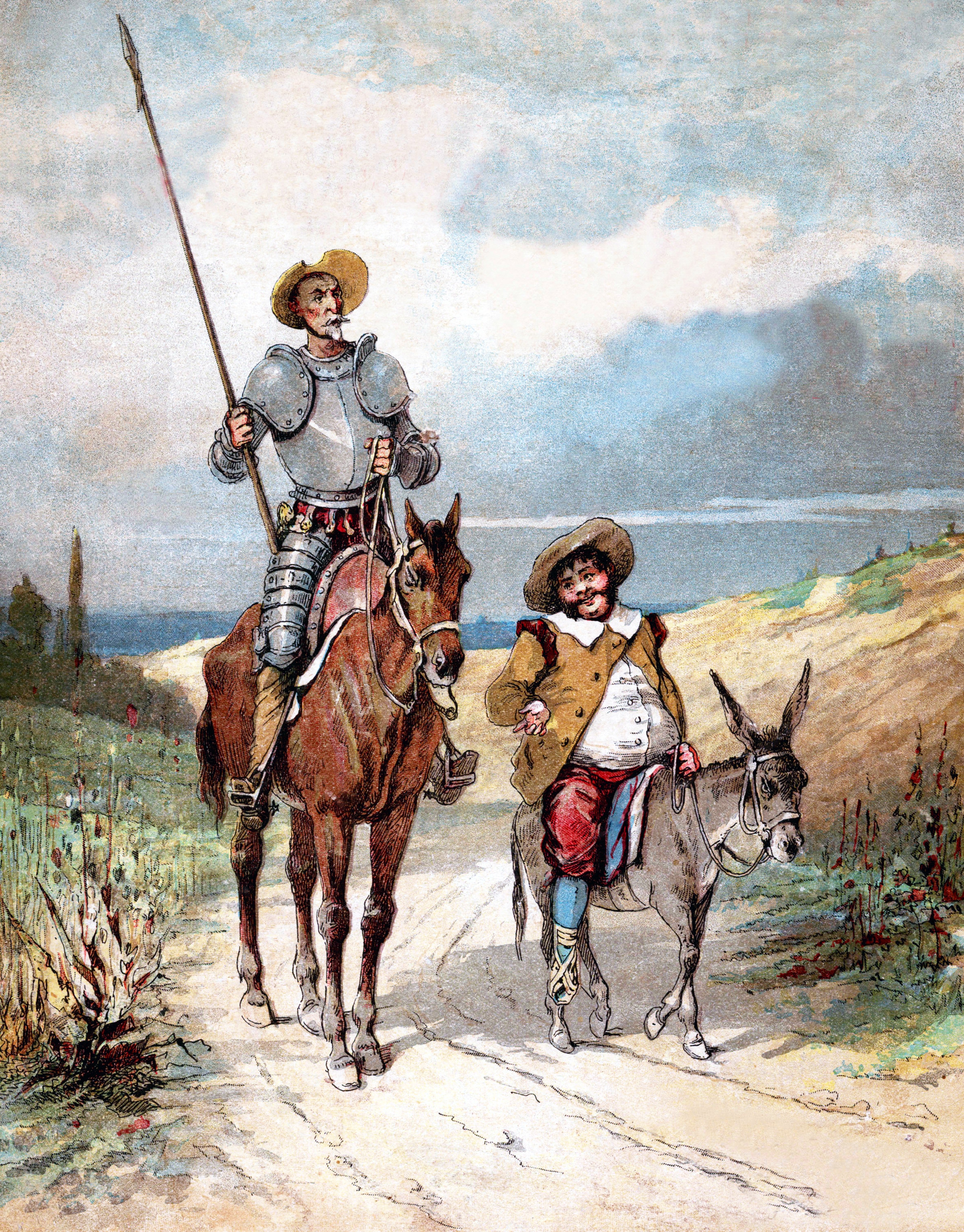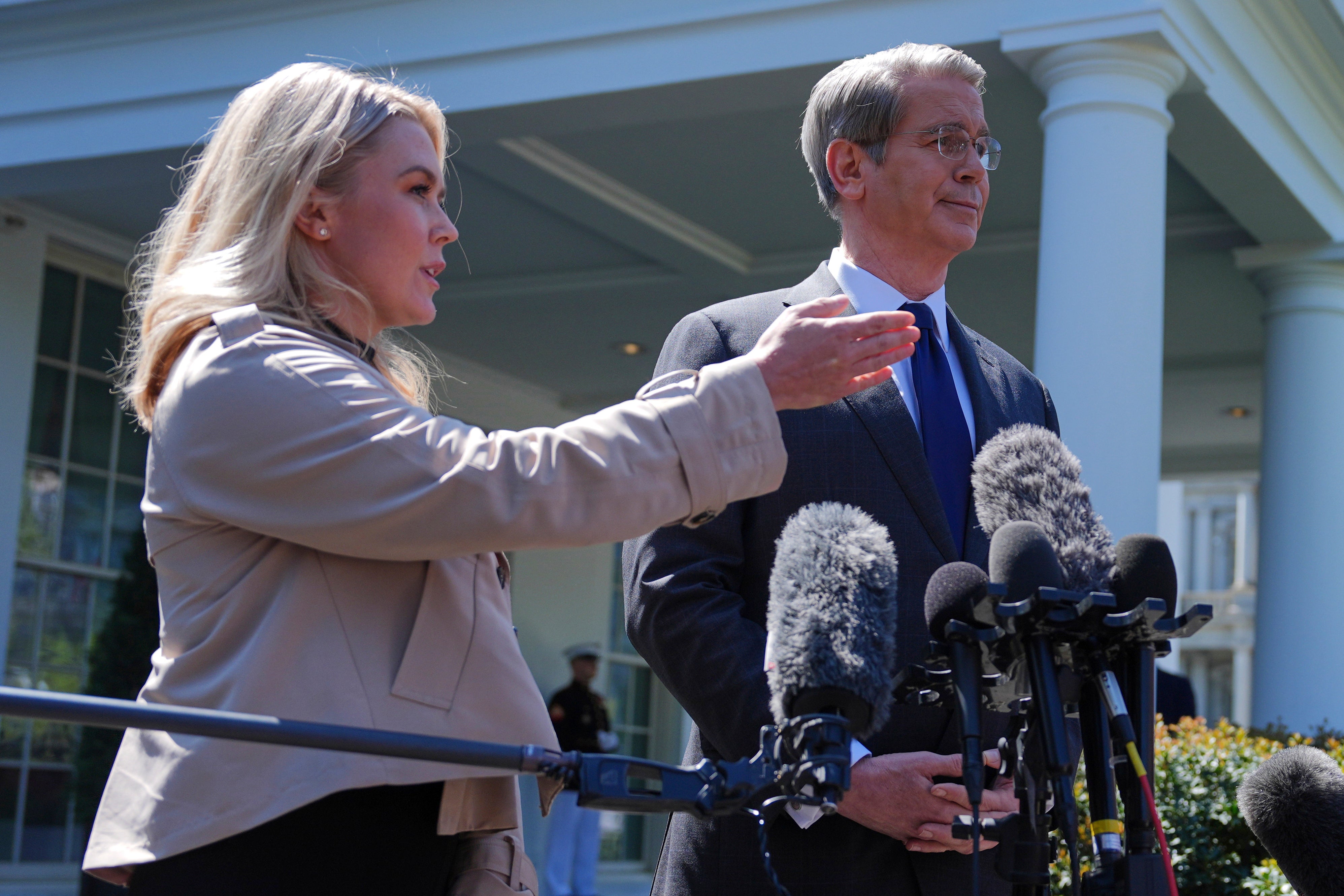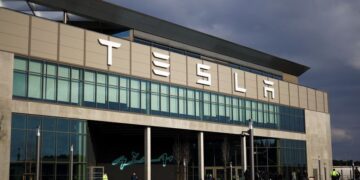Donald Trump has made an art form of selling his failures as triumphs, and this week’s capitulation on tariffs was his Mona Lisa.
The president promised his tax on the world would herald a new golden age for American manufacturing — wealth, jobs, industry roaring back to life, a Middle Class reinvigorated and sprinting toward gleaming factories in hard hats, prosperity for Main Street, not Wall Street.
But just seven days and one stock market crisis later, he was forced to abandon those plans, and Main Street, too.
That much was evident when, in the hours after he climbed down from his tariff gambit, Trump gathered with a small group of billionaires in the Oval Office to boast about all the money they had made.
“He made $2.5 billion today, and he made $900 million. That’s not bad,” said Trump, gleefully, as Americans across the country were still counting the cost of the adventure to their retirement savings.
The story of the last week is a relatively simple one. An ill-thought-out economic plan from the most powerful man in the world was roundly rejected by global capital, and the president was forced into a humiliating retreat.
The White House wanted to tell a different story. What followed was a propaganda effort that some have described as Orwellian, but in truth belongs to Cervantes.
In this telling, Donald Quixote bravely rode into battle against his enemies in the global financial market, cutting down giants with his sword and returning with glory and treasure. This time, however, there was no Sancho Panza around to tell him the giants were only windmills.
“Many of you in the media clearly missed The Art of the Deal,” said press secretary Karoline Leavitt, incredulously, shortly after the climbdown. “You clearly failed to see what President Trump is doing here.”
There was some truth to that. Everyone failed to see what President Trump was doing — the global financial markets, foreign holders of U.S. Treasury bonds, day traders, pension funds, Vietnamese garment sellers, small business owners in Philadelphia, auto manufacturers in Michigan, economists, Dave Portnoy, Jamie Dimon, and his own staff.
And who could blame them?
Trump’s announcement of one of the most radical realignments of global economic policy in a century was not a serious endeavor. Anyone willing to give the plan the benefit of the doubt likely abandoned that notion when the president declared tariffs on islands only inhabited by penguins.
Even the most complex algorithms, created by cutting-edge artificial intelligence to predict macro trends unseen to the human eye, are not equipped to account for a president who tries to levy taxes on flightless sea birds.

It didn’t take long for the holes in Trump’s plan to emerge — giant Grand Canyons.
There appeared to be two equally incoherent plans in place that could simply not exist in the same universe.
The first was that the tariffs were a permanent and necessary measure to rebuild the American manufacturing base. The second was that the tariffs were designed to force countries to renegotiate trade deals on terms more favorable to the United States.
Trump and the White House vacillated between the two ideas whenever they were given a chance to provide clarity.
When questioned about the paradox he has created, Trump replied: “They can both be true. There can be permanent tariffs and they can also be negotiations, because there are things that we need beyond tariffs.”
Pity the entrepreneurial industrialist ready and eager to build a new garment factory in the Midwest. Would the tariffs be there tomorrow to protect his new enterprise? They might as well ask a spinning eight ball.
It turned out that both ideas were based on gross miscalculations, too.
The author of the research that the White House used to justify its tariffs emerged to tell them they had gotten his work “wrong. Very wrong.”
Trump’s plan to reduce trade deficits was similarly based on a misunderstanding of how trade operates in a globalized world. Trump appeared to want to eradicate trade deficits with countries around the world. In other words, he wanted countries to buy as much from the United States as it buys from them.
The absurdity of this notion is summed up by an old joke attributed to Nobel laureate Robert Solow: “I have a chronic deficit with my barber, who doesn’t buy a darned thing from me.”

Trump’s supporters may have been fooled, but the markets were not.
The day after Liberation Day saw $2.5 trillion wiped off the S&P index, its worst day in five years.
The president was unmoved, likening the collapse to “like when a patient gets operated on and it’s a big thing.”
“We’ve never seen anything like it. The markets are going to boom. The stock is going to boom. The country is going to boom,” he said on Thursday, before departing to Florida to golf.
They didn’t. They did the opposite of boom, in fact. The week ended as one of the worst on Wall Street since the turn of the century.
Markets crave certainty, but when Trump was afforded the opportunity to deliver it in press conferences or events, he could only produce word salads and more questions.
“I know what the hell I’m doing,” Trump told a gathering of House Republicans Tuesday night, bragging that countries have been “kissing my ass” to try to make trade deals.
The next few days were a battle between Trumpworld and reality. The markets continued to tank, Trump called for everyone to “BE COOL!” while everyone’s savings ebbed away.
In the end, it was not the stock market that forced Trump to reverse course, but an indicator of the general health of the entire U.S. financial system. The tariffs had triggered a steep sell-off in the U.S. government bond markets and the dollar, a sign that foreign capital no longer saw the U.S. as a safe place to keep its money.
On Wednesday afternoon, Trump announced on Truth Social that he would pause the “reciprocal” tariffs for 90 days while increasing tariffs on China to 125 percent.
Trump said more than 75 countries had reached out to negotiate new deals with the U.S., but the White House has refused to name any of them. (You wouldn’t know them anyway, they go to a different school.)
Like the last Japanese soldier fighting in the Second World War decades after its end, Trump’s staff kept up the fight to the bitter end.
“This was his strategy all along,” Treasury Secretary Scott Bessent said.
“You have been watching the greatest economic master strategy from an American President in history,” his senior advisor, Stephen Miller, wrote on X.

A short while later, Trump contradicted them both.
“Well, I thought that people were jumping a little bit out of line. They were getting yippy, you know, they were getting a little bit yippy, a little bit afraid,” he said.
Even with the pause, there may be more pain to come for the U.S. economy. But there was little in the way of contrition from the president for turning the U.S. economy into a meme coin.
“We are doing really well on our TARIFF POLICY. Very exciting for America, and the World!!! It is moving along quickly,” he wrote on his Truth Social account on Friday.
The episode has remarkable parallels to one of his greatest business failures — his three failed Atlantic Casinos. Then, the burden of his defeat fell on everyone below him — investors and construction firms that helped build the casinos.
“Atlantic City fueled a lot of growth for me,” Trump said years later of his failed ventures there. “The money I took out of there was incredible.”
As many Americans are counting the cost of this latest adventure, Trump’s friends in the Oval Office are saying the same thing today.

















